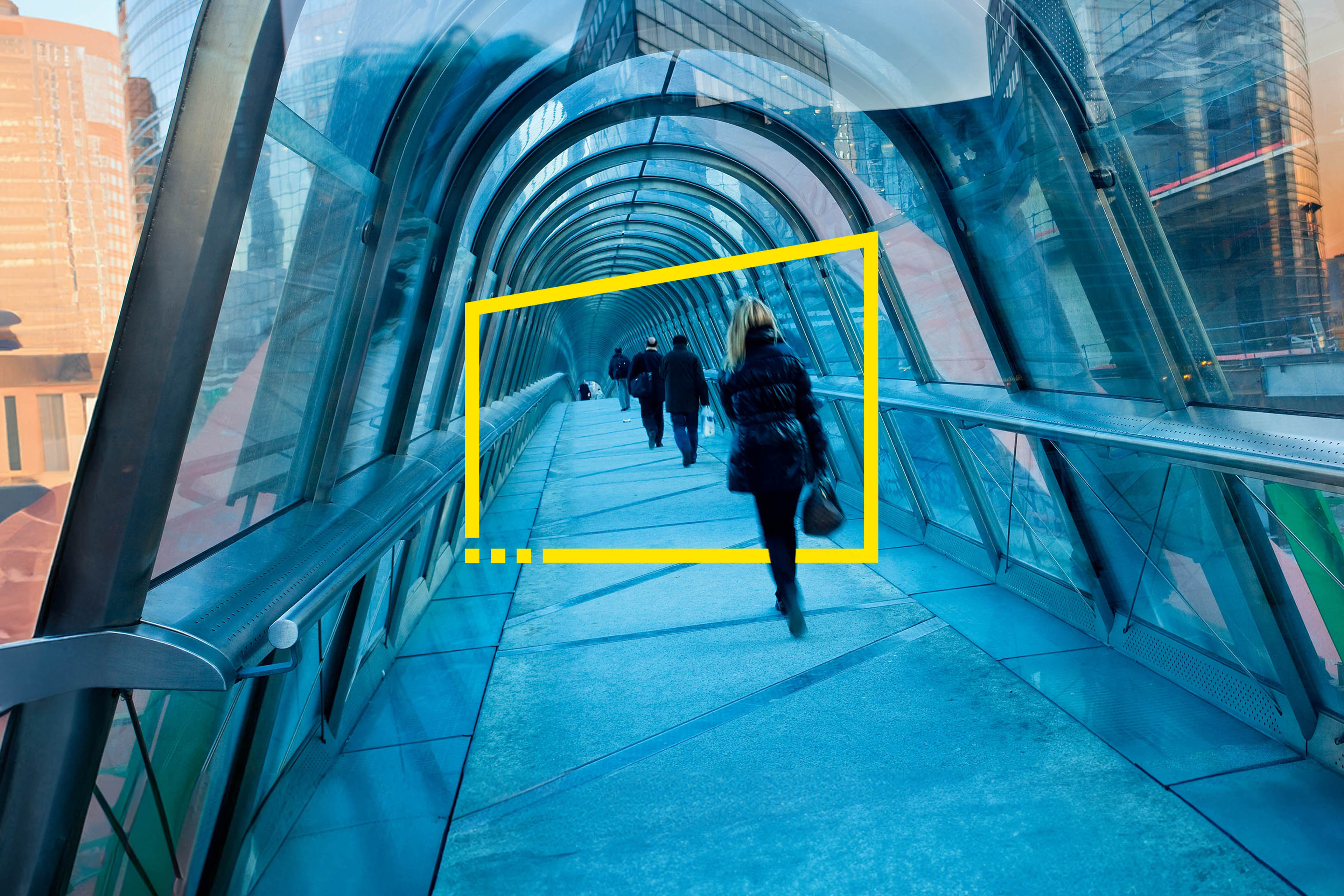EY refers to the global organization, and may refer to one or more, of the member firms of Ernst & Young Global Limited, each of which is a separate legal entity. Ernst & Young Global Limited, a UK company limited by guarantee, does not provide services to clients.

Why the metaverse is a human opportunity
The metaverse promises to transform our world. So what does it mean for us as humans?
In brief
- The metaverse has huge potential for building communities, forming new habits and serving our needs better
- It could also transform experiences such as healthcare and education
- People will need support to adapt to the changes that are coming and protection from harmful content and interactions
Web 3.0 is on the horizon, an upgrade to the current incarnation of the web characterized by decentralization, personalization and individual ownership of assets and data.
Some aspects of Web 3.0 are already here – for example, blockchain, cryptocurrency and non-fungible tokens – but it has hardly got started, especially because one of the most significant elements is still at the concept stage: the metaverse.
In fact, there is evidence that tech companies are reducing their investment in the metaverse already, for unknown reasons. There may be a need to refocus investments, reorganize in preparation for the metaverse, or they may just have stopped believing its time is now – which is something we’ve seen with tech trends before, such as navigation and tablets.
For many people, the metaverse is well established – think of multiplayer gaming or virtual meetings and collaboration. But we’re promised much more. The metaverse will be a massively scaled and interoperable network of real-time rendered 3D virtual worlds, which can be experienced synchronously (and persistently) by an effectively unlimited number of users. The ability for organizations and institutions to scale a sense of belonging through a common shared experience (that is more easily reinforceable) has huge potential for engagement, performance and new habit formation. The metaverse enables that
This is particularly significant for organizations and institutions. It’s an opportunity, possibly even an imperative, to bring customers, members and peers together under their banners and help them resist any harmful effects of the trend for decentralization, which threatens to erase some businesses from the internet altogether. Technology is built around the habits and needs of people. In the last few years, it has enabled the mass adoption of remote work through the pandemic and beyond and will soon power interactive business.
Technology also drives new habits. Within days of being released, ChatGPT, the conversational language model from OpenAI, was being used globally to brainstorm ideas, write code (including to help build out spaces in the metaverse), compose messages and much more. It is becoming as useful as a search engine in the 2000s. Similarly, the metaverse will serve needs we haven’t even thought of yet. So, we need to be ready for it.
A new era of social interaction is coming
The metaverse will revolutionize nearly all aspects of life and business in the next decade, allowing collaboration in virtual spaces, augmented physical spaces and a blend of both.
It offers the possibility of 360º measurement and completely new opportunities to enhance business, develop new experiences and create a better life.
This will, of course, rely on tech – both the hardware such as headsets, wearable sensors, apps, and the underlying connectivity infrastructure and code. But we need to start seeing the metaverse as a human opportunity.
What more can the metaverse do for us? Let’s visualize some of the most easily achievable applications.
The doctor will see you now
Telemedicine has existed since the 1990s, and video consultations are now an everyday feature of seeing your doctor. How will the metaverse change the delivery of medical care? Firstly, it will make virtual consultations the baseline, and turn physical appointments into a premium experience – seeing your doctor in person will become a luxury that’s chargeable accordingly.
Secondly, it will also improve the quality of basic virtual consultations. The metaverse will enable patients to feel like they are in the room with their doctor, and as wearable sensors become more sophisticated, the human touch will become possible virtually. This is important because a doctor’s “bedside manner,” the empathic social connection between clinician and patient, has been shown almost to have a placebo effect – kind and attentive doctors may make patients better faster. The metaverse enables that wherever the two people are located.
The metaverse could also enable doctors to see many more patients than has ever been possible. With the power of AI trained to diagnose conditions, patients could be seen at a huge scale in the metaverse. This kind of intelligence is hinted at in technologies such as OpenAI’s ChatGPT, which enables intelligent dialog with the potential for personalization, for example, based on a data repository such as past medical history.
New potential for learning
One obvious application for the metaverse is to create interactive virtual lecture halls or seminar rooms so that academic institutions can teach more students than ever before. This could solve two major problems – increasing revenue for institutions by accepting more students onto courses, and creating the opportunity for more students to access typically exclusive universities with historically very limited places. Education at a greater scale need not diminish the quality of the experience either. With AI, virtual educators can host personalized virtual tutorials with many individual students simultaneously, deploying “intelligence systems” based on what the AI can learn about the student’s personality, experience and academic work. Artificial Intelligence technologies such as ChatGPT may even make the essay format redundant too, which poses deeper questions about the human dimension and purpose of education.
The metaverse could also transform another area of learning: hands-on training. Medical or engineering students can work on virtual bodies or machines. Flight or driving simulation could become incredibly realistic in the metaverse, being a completely immersive experience. In gaming today, infinite player scenarios can be created based on individuals’ experiences, and this is easily applicable to any training situation that hones responses and behaviour in constantly changing and unexpected situations.
These immersive technologies will allow organizations to onboard people at scale. And with multisensory and controlled participation, they have the potential to enable greater retention of learning – making them much better than the learning tools and experiences we have today.
Building a new world around people
Tech is one thing, but human emotions, feelings and behaviour are crucial. Some very big changes are on the horizon, and people will need support and resources to adapt.
As we speak, businesses are racing toward future very different from the one they were designed to operate in. In his 1970 book, Future Shock, Alvin Toffler wrote that “The illiterate of the twenty-first century will not be those who cannot read and write, but those who cannot learn, unlearn, and relearn.” This has never been more resonant, as citizens and workers will need to embrace multiple adaptations and be willing to abandon previously cherished orthodoxies.
Soon, every company will find itself at the intersection of many new worlds. And to grow and thrive in the age of the metaverse, organizations must centre their strategies on a dramatic re-drafting of skillsets and mindsets.
For example, workers that maintain factory equipment will soon be able to do this around the world virtually by using augmented reality headsets – not their familiar tools. Patients will have to adapt to being attended to remotely, often at home, with virtual supervision to administer their own treatment. University students will need to be convinced that their virtual classroom is just as good, if not better, as the in-person lectures it replaces – especially because the virtual version will not be any less expensive.
But overall, the metaverse itself offers many hands-on, immersive opportunities to help people unlearn habits formed from old technology and procedures and acclimatize them to the new realities quickly.
New and unknown risks
With everything we’ve learned from the mass adoption of the internet and social media, we should anticipate some fundamentals about the metaverse. For example, who will be the gatekeepers? Who will look out for the interests of users, particularly children? How do we mitigate antisocial or abusive behaviour? Much research needs to be done if the metaverse is to be a safe place for everyone.
The metaverse has the potential to be a crucial new component in building a better working world. It could redefine the work experience, just as remote working has, but with multiple extra dimensions. If Web 3.0 is about interacting, then we need to orient its development toward benefiting everyone who will interact within it. The metaverse will not replace social connection and physical contact – but it has the potential to augment it, as long as it enables high-quality, trustworthy and believable interactions virtually.
The time is…now?
The metaverse offers huge benefits for people and businesses, but it must be managed correctly. We can learn lessons from social media and not repeat the same mistakes – for example, being conscious of age restrictions, monitoring and restricting harmful content (or spaces) and the dangers of free and unmoderated speech (and, in the metaverse, actions).
The metaverse will massively impact interactions with customers – and so the ability to be an early mover and retain trust and confidence under those circumstances will be a differentiator. Encouraging faster adoption and sustaining loyalty will be tested – but it presents a great opportunity to steal a march on more hesitant, risk-averse competitors.
All the technologies, products and shared spaces on the metaverse will be part of a cross-industry transformation. But it must be framed as a dramatic new tool – a new arena – for humans. The metaverse can boost human power. Help people achieve more complex goals. Enable human interactions to scale from one-to-one to one-to-thousands. And extend personalized services to millions.
With this framing, having an inherently optimistic stance will be critical. There are no certainties, but people who contentedly defend existing models and are discomfited by new and different worlds will be left behind.
Making the metaverse a desirable and rewarding place to be is the work of the next few years. Let’s make a start.
Disclaimer: The views reflected in this article are the views of the author and do not necessarily reflect the views of the global EY organization or its member firms.
How EY can Help
-
Discover how EY's strategic transformation services can help your organization drive strategic transformation with long-lasting results.
Read more -
Discover how EY's cybersecurity, strategy, risk, compliance & resilience teams can help your organization with its current cyber risk posture and capabilities.
Read more -
Discover how EY's intelligent automation team can help your business implement a holistic view of automation, process & service improvement with our intelligent automation consulting services.
Read more
Summary
The era of the metaverse is coming. How do we turn this technology-led revolution into a human opportunity?
Related articles
Cloud DR: How can the public cloud help secure business continuity?
The Kenya Revenue Authority now requires all taxpayers carrying on business to onboard on the electronic Tax Invoice Management System (e-TIMS). Taxpayers should ensure electronic generation and transmission of invoices through e-TIMS with effect from 1 January 2024. Failure to register exposes a taxpayer to a penalty that is twice the amount of tax due and makes the expense nondeductible for corporation tax purposes.
Drive2Cloud: How to quickly build secure applications in the cloud with DevSecOps?
The DevSecOps methodology allows you to include IT security requirements in the development process in a way that minimizes risks without slowing down the pace of delivering new products.





